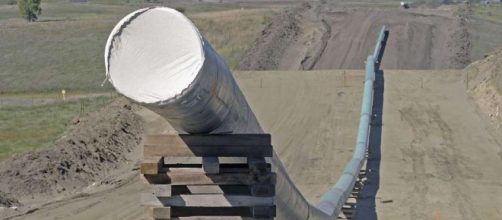One of President Trump's first acts in Oval office was to sign an executive order reversing the decision by the Obama administration, to delay approval of the $3.8 billion Dakota pipeline project by Energy Transfer Partners LP.
The highly publicized and embattled Dakota pipeline had its first oil spill before being fully operational. Earlier last month, in South Dakota, 84 gallons of oil leaked from the Dakota Access Pipeline. However, the spill didn’t come as a surprise to anyone, especially the Native American Tribes.
Trump's executive order
Money and greed have always been the determining factor with the Dakota pipeline.
When Trump signed the executive order clearing the path for construction to continue he also opened the way for another pipeline, the Keystone XL project, that will carry Canadian crude into the United States.
Despite an ongoing lawsuit by four Sioux tribes seeking to close the pipeline, the state's Department of Environment and Natural Resources did not take steps to announce the spill to the public.
They did, however, report the spill on their searchable database. In defense of their actions, a scientist working for the agency said that they would only issue a press release if there was a threat to public health.
Agency treats all spills equally
Environmental scientist, Brian Walsh, who is with the state's Department of Environment and Natural Resources said, that they understand how much attention the Dakota pipeline gets, but they must treat all spills consistently.
Adding, the agency handled this 84-gallon oil spill exactly the way they take care of other spills.
Walsh admits that the Dakota spill did not come as a surprise because of other pipeline leaks that have happened in the state. The Standing Rock Sioux tribe did not see it that way. They were the first plaintiff in the lawsuit and insist that the leak proves the pipeline is a threat.
Need for environmental studies
As suggested by tribe members from the start, tribal attorney, Jan Hasselman said that the 84-gallon oil spill once again proves the need for the environmental studies.
Prior to Trump pushing for completion of the pipeline, earlier this year, the U.S. Army Corps of Engineers had prepared to conduct other environmental and structural studies, but later gave up on any further investigations.
Months of protest led nowhere
Months of protests and lawsuits were unable to do more than stall the inevitable – gallons of oil leaking into the land and water of the Native American's living in South Dakota.
Energy Transfer Partners Pipeline operator maintains that the pipeline poses no threat to the land or those living on it, and insists it is safe.


